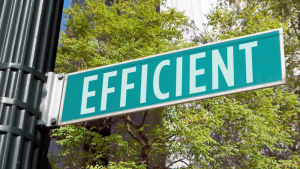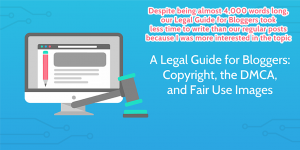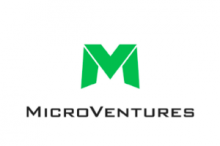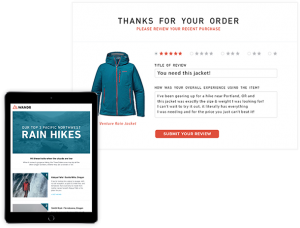The world can be a scary place — especially when it comes to getting hired after age 50. It can even feel like you’re swimming against the current at times. But doing your personal branding on LinkedIn can be like using a motorboat to push through that current.
Granted, when you’re starting out on this network, it can be a little overwhelming. Where do you begin? What features are available to you — and what will help you to build your personal brand?
This post will go over everything you need to know about how to build a personal brand on LinkedIn.
But before we continue, let’s be sure we’re all on the same page.
What do I mean by a personal brand and why should you care?
A personal brand is your calling card. Just as you instantly know that Apple stands for easy-to-use, cool and sleek, you too need to project a readily understandable, engaging image. That’s your brand. It helps sell and market you so you people know what you’re about.
Here is where LinkedIn comes into play. It’s by far the best platform for establishing your brand.
Why Personal Branding on LinkedIn Is A Good Ide
Better than a good idea. It’s a no-brainer.
For starters, most of the key features on LinkedIn are absolutely free — and if you’re just starting with your personal brand, that is music to your novice ears. Of course, paid features are available and are helpful, but you still can do a lot without them.
And the value of LinkedIn goes beyond its budget-friendly feature
As far as a business-centric social media network goes, LinkedIn is leaps ahead of its competitors. It’s the network to help people establish their brands, link up with prospects and customers and and stand out from the crow
Even better, LinkedIn is constantly adding to its repertoire of features and improving its usability
But let’s now talk more specifically about the features and strategies that will be most important to you when it comes to personal branding on LinkedIn.
14 Strategies for Personal Branding on LinkedIn
1. Choose the Right Profile Photo
Photos are the first thing to draw our eyes when we at someone’s LinkedIn profile. If it’s blurry or even non-existent, you flunk personal branding. Instead, ensure your profile photo reflects your competence and poise and helps brand you
Here are a few pointers to keep in mind as you choose your profile phot
- Include a clear view of your face and shoulders — not too close or far away.
- Use a clear shot — no blurriness.
- Don’t use a photo with sunglasses or hats that obscure your features.
- Smile.
- Use good lighting.
- Make it just you — no group shots with other people.
- Dress professionally.
2. Choose a Creative Cover Photo
The next visual element in your profile is your cover photo. This background photo gives you the opportunity to get creative and distinguish your brand.
Choose something that speaks to what your brand is all about or an accomplishment that you are especially proud of. For instance, if you’re an accountant, you might use a picture of a calculator. If you’ve recently published a book, you could use a picture of the book jacket as I do here. Or if you’ve done public speaking, include a candid of you on stage.
Make it as fun and quirky or as straightforward and serious as you want
3. Optimize Your Profile for Search Engines
Many people don’t realize that with a few simple steps they can optimize their profile to organically reach more people.
It all comes down to the words you choose. Ask yourself, what words would potential clients or employers use to find your brand? It could be as simple as “experienced tax consultant” or “Boston area tax consultant.”
Whatever keywords you choose, include these in your headline, job title, summary, and job description. These are the areas that the LinkedIn search engine will key in on to rank you in search results.
4. Personalize Your URL
When you first create your profile, LinkedIn assigns you a URL. This is usually long and clunky and has no relation to you or your brand. But the good news is that LinkedIn allows you to personalize your URL This is crucial to your profile, since it makes it easier to remember and share.
5. Write a Glowing Description
I get it — it’s hard to describe yourself. You want to put your best foot forward but don’t want to be a blowhard. It can be a balance. But in your LinkedIn description, it’s time to shine a light on you.
Talk about specific accomplishments — and include numbers and figures whenever possible. This could be the X amount in sales that you made in a year or that you increased site traffic by Y%
Steer clear of industry jargon that could be confusing. Instead, make it simple and clear to anyone who reads your description just how valuable you are
6. Highlight Your Skills
LinkedIn allows you to list up to 50 skills on your profile. This might initially seem like a lot, but as you start the list, you’ll see how quickly it fills up.
Choose skills that are most relevant to your brand. Include general skills like “writing” and “consulting,” as well as more tailored skills like “mobile development” and “middleware and integration software.”
Stuck on what skills to include? You might try a simple search on Google for “top LinkedIn skills for ” and see if it gets the creative juices flowing
7. Include Media in Your Profile
Spice up your education and experience section with media. LinkedIn allows you to upload documents, photos, links, presentations, and even video. Adding samples of your creativity and accomplishments takes your profile to the next level and is a great way to draw and keep the attention of potential clients and employers.
8. Write Articles
One feature that distinguishes LinkedIn from other social networks is the ability to write and publish articles directly on the platform.
This gives you the space to demonstrate your knowledge and expertise. These could be “how-to” tutorials, listicles, or even trends that you see within your industry. It gives you space to be creative. So use it.
Even if you have a blog on your own website, publishing on LinkedIn has specific advantages. For instance, all your connections get notified whenever you publish on the network and you can choose to feature these articles on your LinkedIn profile.
9. Participate in Groups
LinkedIn groups are a powerful resource, especially as you develop your personal brand.
Group let you meet and mingle with other professionals within your industry. These can lead to powerful connections and even working relationships down the line.
But there’s one crucial part to being part of these groups: participation. You can’t sit on the sidelines forever. Get into the mix. Comment. Share content. Offer advice. Start conversation threads. This kind of engagement will make these groups more beneficial.
10. Ask for Recommendation
Everything is word of mouth. The more people who recommend you, the more legitimacy it lends to your brand
Many people will give you recommendations when you reach out. Start with fellow colleagues, whether past or present, as well as clients who have shown enthusiasm for your brand in the past.
When you send a request for a recommendation, it might help to make it more personal, even including a reason. Whether it’s that you’re looking for a new job or looking to build your personal brand, it makes people more likely to respond
11. Tune Into Connection Requests
A big part of LinkedIn is making connections — the more, the better. So don’t be shy about accepting all the requests that come in, whether you know the person or not.
The more connections you have, the higher LinkedIn will rank you and the more your profile will show up to others. Keep in mind that the connections of your connections will often be notified and invite to connect with you as well.
12. Engage
Don’t allow your LinkedIn account to grow stagnant. Keep it fresh and up-to-date. Share helpful content or news about you. Comment on other people’s posts. The more present you are, the more benefits you will reap from this powerful network.
13. Use Analytics to Track Your Progress
LinkedIn provides basic analytics features to all of its users. These aren’t extremely in-depth, but they do give you a window into your progress. Track how many people are viewing your profile and basic demographic information.
Set goals for yourself and measure your progress toward those goals. Take note of which tactics are most effective and which give you little to no results. Such measurement can guide your efforts moving forward.
14. Promote Your Brand with LinkedIn Ads
Everything I’ve discussed up to this point has been completely free — and, as you can see, it gives you a lot of value. But if you would like to extend your reach, then investing in paid ads might be the ticket you need
Think of it in terms of audience. You might have a few hundred or even a few thousand of connections on LinkedIn from your efforts alone. But LinkedIn has a vast network of 740 million users around the world. Access to such a large network could make all the difference for your personal brand.
Plus, LinkedIn’s targeting features allow you to key in on your specific audience and reach the people who matter to your brand
—————————————————————
Final Thoughts About Personal Branding on LinkedIn
LinkedIn is one of the most important networks for personal branding. If you’re beginning to brand yourself or worried about getting hired later in life, or starting a new business, I encourage you to give special attention to LinkedI
Whether your personal brand is new or you’ve been developing it for a while, LinkedIn is a powerhouse tool to have at your fingertips. I hope these strategies help you to make the most of personal branding on LinkedIn.
Photo by Greg Bulla on Unsplash
Digital & Social Articles on Business 2 Community(52)






